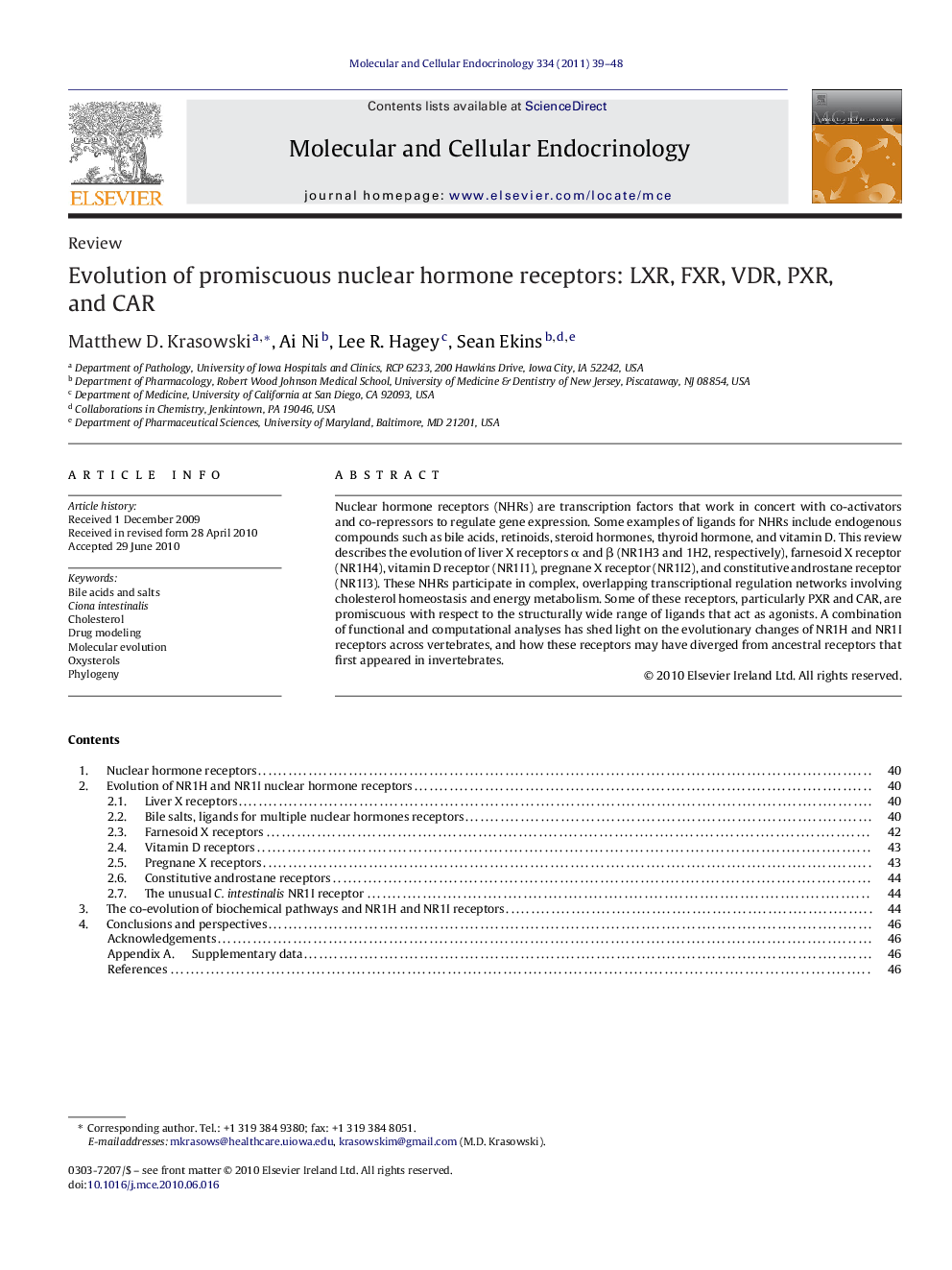| Article ID | Journal | Published Year | Pages | File Type |
|---|---|---|---|---|
| 2196660 | Molecular and Cellular Endocrinology | 2011 | 10 Pages |
Nuclear hormone receptors (NHRs) are transcription factors that work in concert with co-activators and co-repressors to regulate gene expression. Some examples of ligands for NHRs include endogenous compounds such as bile acids, retinoids, steroid hormones, thyroid hormone, and vitamin D. This review describes the evolution of liver X receptors α and β (NR1H3 and 1H2, respectively), farnesoid X receptor (NR1H4), vitamin D receptor (NR1I1), pregnane X receptor (NR1I2), and constitutive androstane receptor (NR1I3). These NHRs participate in complex, overlapping transcriptional regulation networks involving cholesterol homeostasis and energy metabolism. Some of these receptors, particularly PXR and CAR, are promiscuous with respect to the structurally wide range of ligands that act as agonists. A combination of functional and computational analyses has shed light on the evolutionary changes of NR1H and NR1I receptors across vertebrates, and how these receptors may have diverged from ancestral receptors that first appeared in invertebrates.
